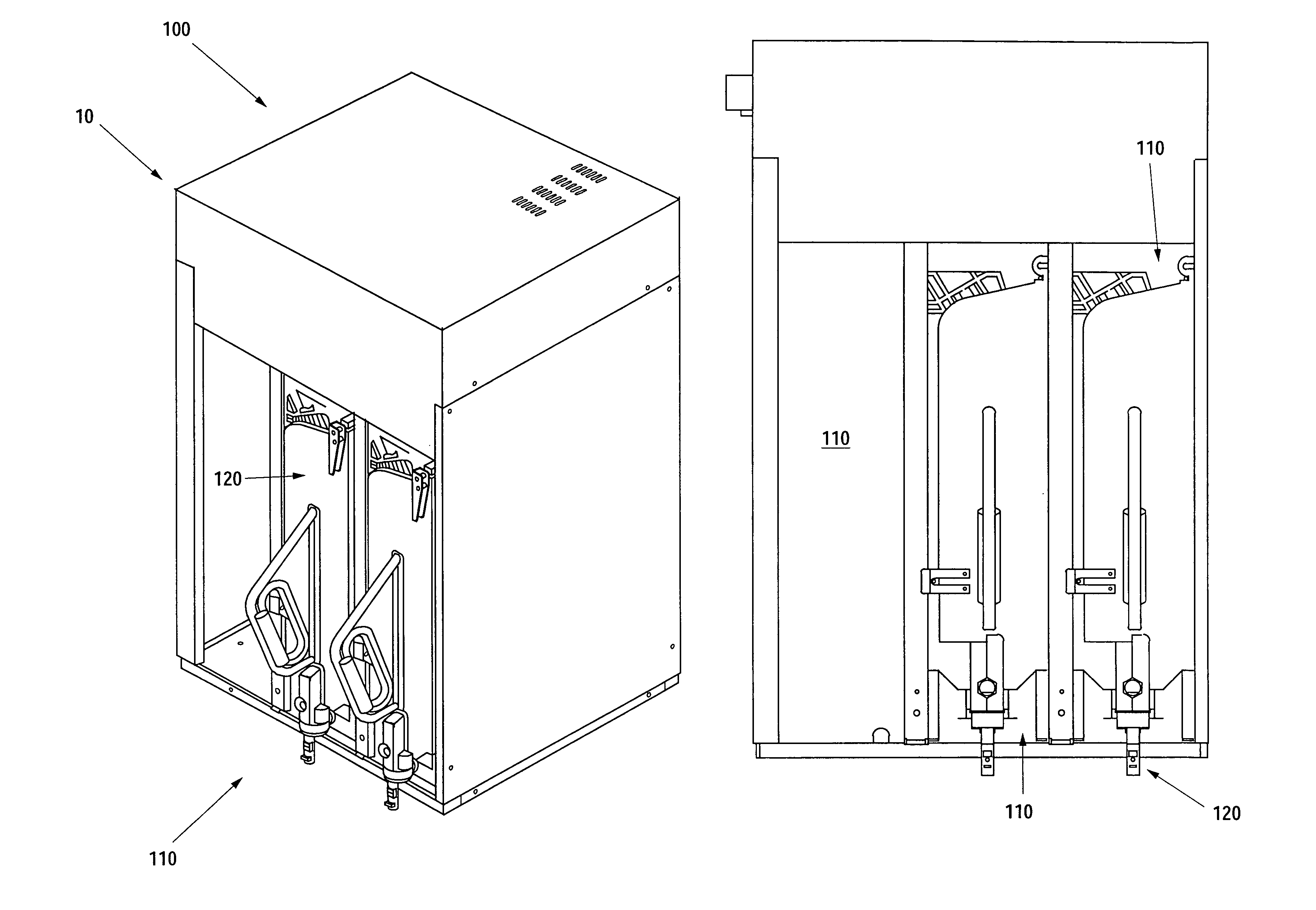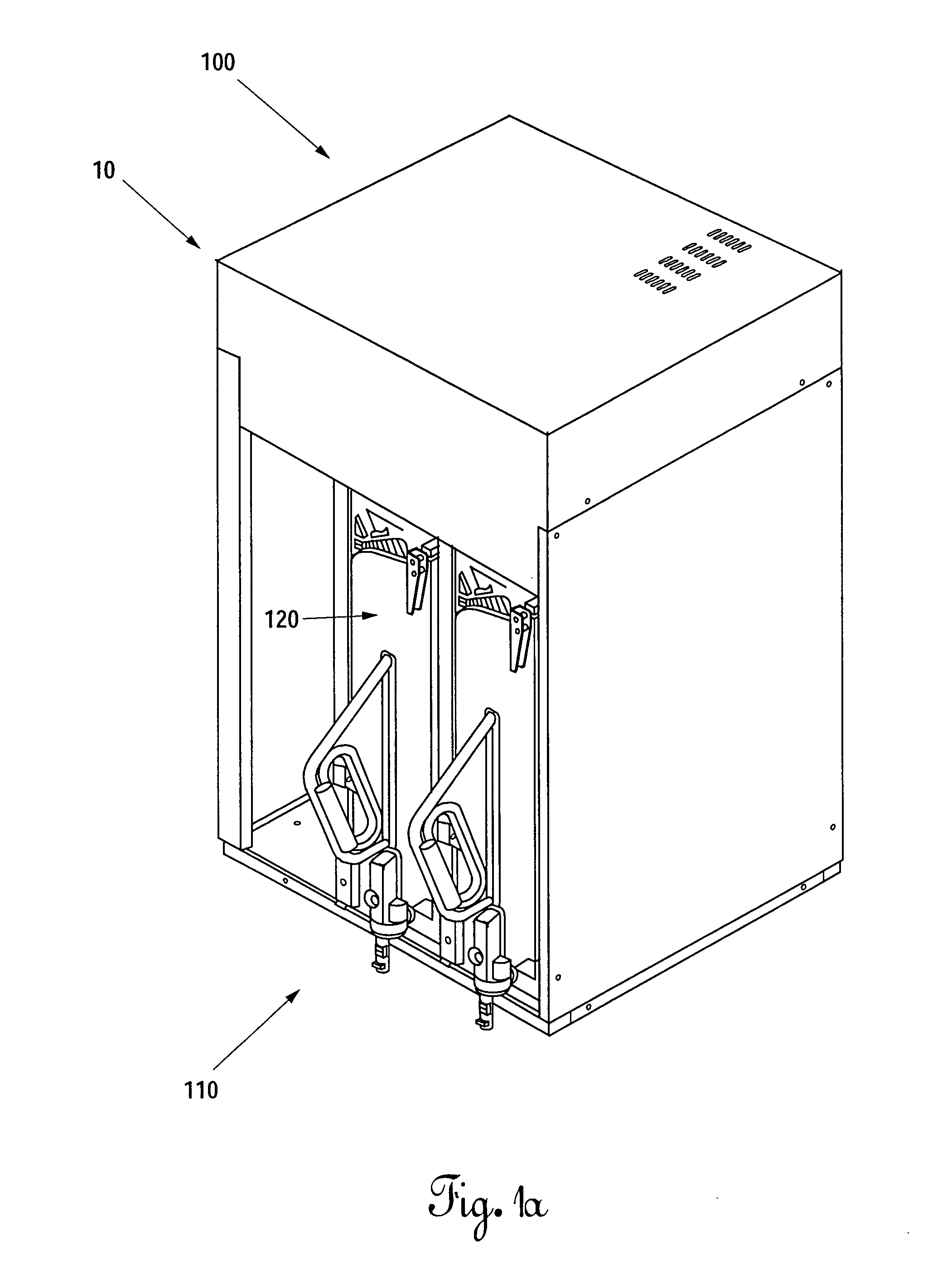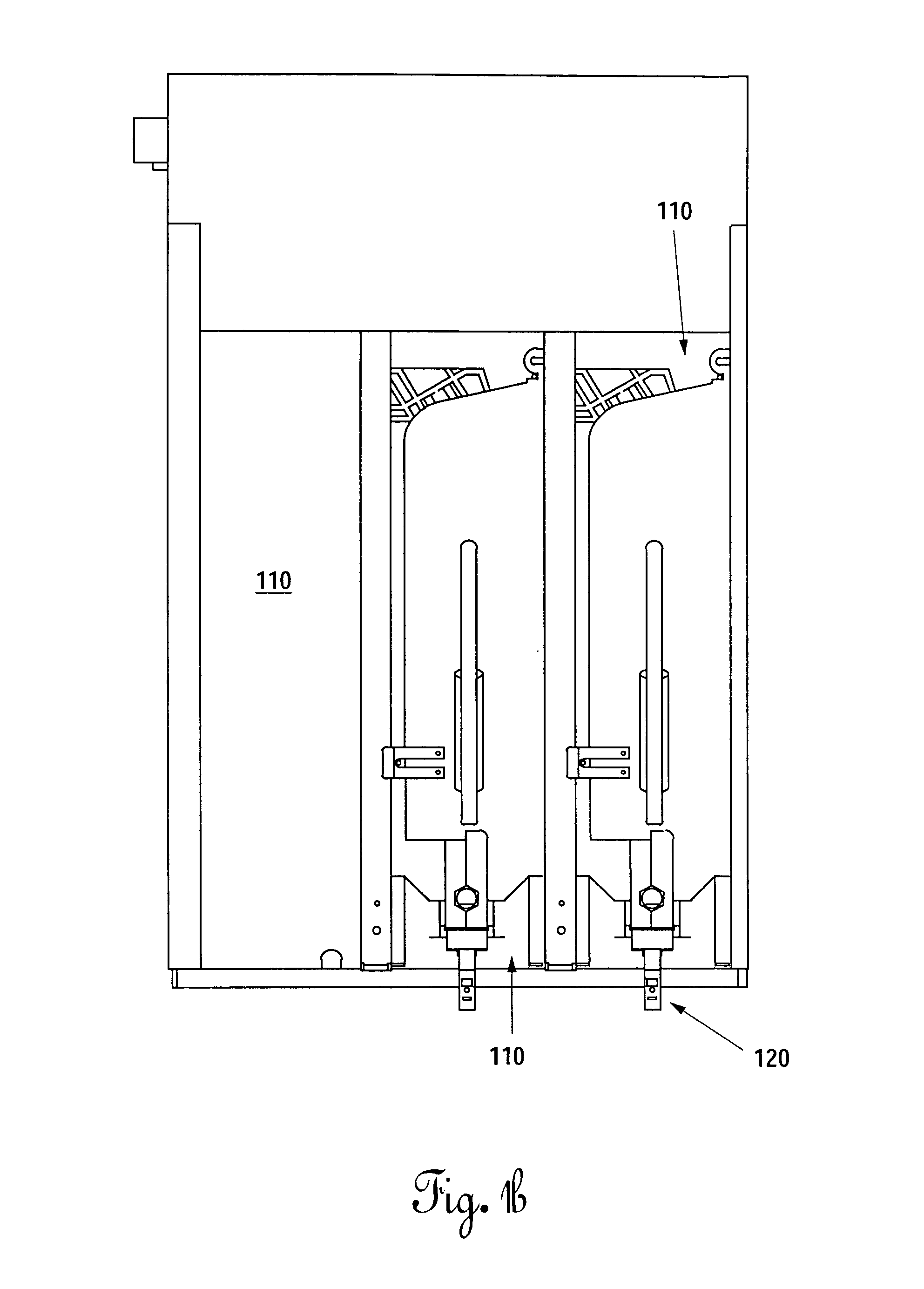Method of calibrating a dispensing station
a dispensing station and dispensing method technology, applied in the direction of liquid transfer devices, transportation and packaging, packaging, etc., can solve the problems of unsanitary conditions, prohibitive cost of dispensers and operating costs of such dispensers suitable for dispense of viscous products, and problems such as the inability to meet the needs of consumers,
- Summary
- Abstract
- Description
- Claims
- Application Information
AI Technical Summary
Benefits of technology
Problems solved by technology
Method used
Image
Examples
second embodiment
[0109]In a second embodiment for determining the required position of the evacuation member 133, a package motor assembly 510 is used to ascertain when the evacuation member 133 has applied sufficient pressure to the package 210. The package motor assembly 510, as shown in FIGS. 11a-11b, includes an enclosure 500, a driver 185 and a microswitch 505. The enclosure 500 includes a top cover 501, a bottom cover 502 and a plurality of shoulder bolts 507. In this embodiment, the driver 185 is housed in the enclosure 500 restrained by a plurality of shoulder bolts 507. The enclosure 500 mounts onto the mid plate 105 in the area where the driver 185 currently is mounted. The driver 185 resides inside of the enclosure 500 and is mounted on shoulder bolts 507, wherein the driver 185 is able to slide vertically against a plurality of springs 506. The package motor 185 is connectable to the threaded shaft 139 as in the preferred embodiment. This embodiment further includes a microswitch 505 att...
third embodiment
[0111]In a third embodiment for determining the required position of the evacuation member 133, a package motor assembly 410 is used to ascertain when the evacuation member 133 has applied sufficient pressure to the package 210. In this embodiment, as shown in FIGS. 12a-12b, the package motor assembly 410 includes a driver 185, an enclosure 400 and a hall-effect sensor 403. The enclosure 400 includes a top cover 401, a bottom cover 402, a plurality of shoulder bolts 407 and a plurality of springs 406. The shoulder bolts 407 restrain the top cover 401 and the bottom cover 402. The enclosure 400 mounts onto the mid plate 105 in the area where the driver 185 currently is mounted. The driver 185 resides inside of the enclosure 400 and is mounted on the shoulder bolts 407, wherein the package motor 185 is able to slide vertically. The driver 185 is connectable to the threaded shaft 139 as in the preferred embodiment. This embodiment further includes a magnet 405 attached to the driver 18...
fourth embodiment
[0121]In a fourth embodiment, the backing plate assembly 130 may be replaced with a double roller evacuation unit 700 as shown in FIGS. 15a-15c. The double roller evacuation unit 700 includes a first roller 705, a second roller 710 and a carrier frame 715. The rollers are suitably mounted on the carrier frame 715 to allow a product package 210 to pass between the two rollers. As a first end 712 of the product package 210 passes between the two rollers, product is forced into a portion of the product package 210 that has not passed between the rollers. Since the product is now in a smaller volume, the product package 210 becomes pressurized. The first and second rollers 705 and 710 may have provisions to allow for fluctuations in product particle sizes, such as slight travel away from each other or spring loaded rollers. The roller frame 715 includes a frame track 725 used to restrict the roller bracket 720 to vertical motion. As the product package 210 is pressurized when the roller...
PUM
 Login to View More
Login to View More Abstract
Description
Claims
Application Information
 Login to View More
Login to View More - R&D
- Intellectual Property
- Life Sciences
- Materials
- Tech Scout
- Unparalleled Data Quality
- Higher Quality Content
- 60% Fewer Hallucinations
Browse by: Latest US Patents, China's latest patents, Technical Efficacy Thesaurus, Application Domain, Technology Topic, Popular Technical Reports.
© 2025 PatSnap. All rights reserved.Legal|Privacy policy|Modern Slavery Act Transparency Statement|Sitemap|About US| Contact US: help@patsnap.com



